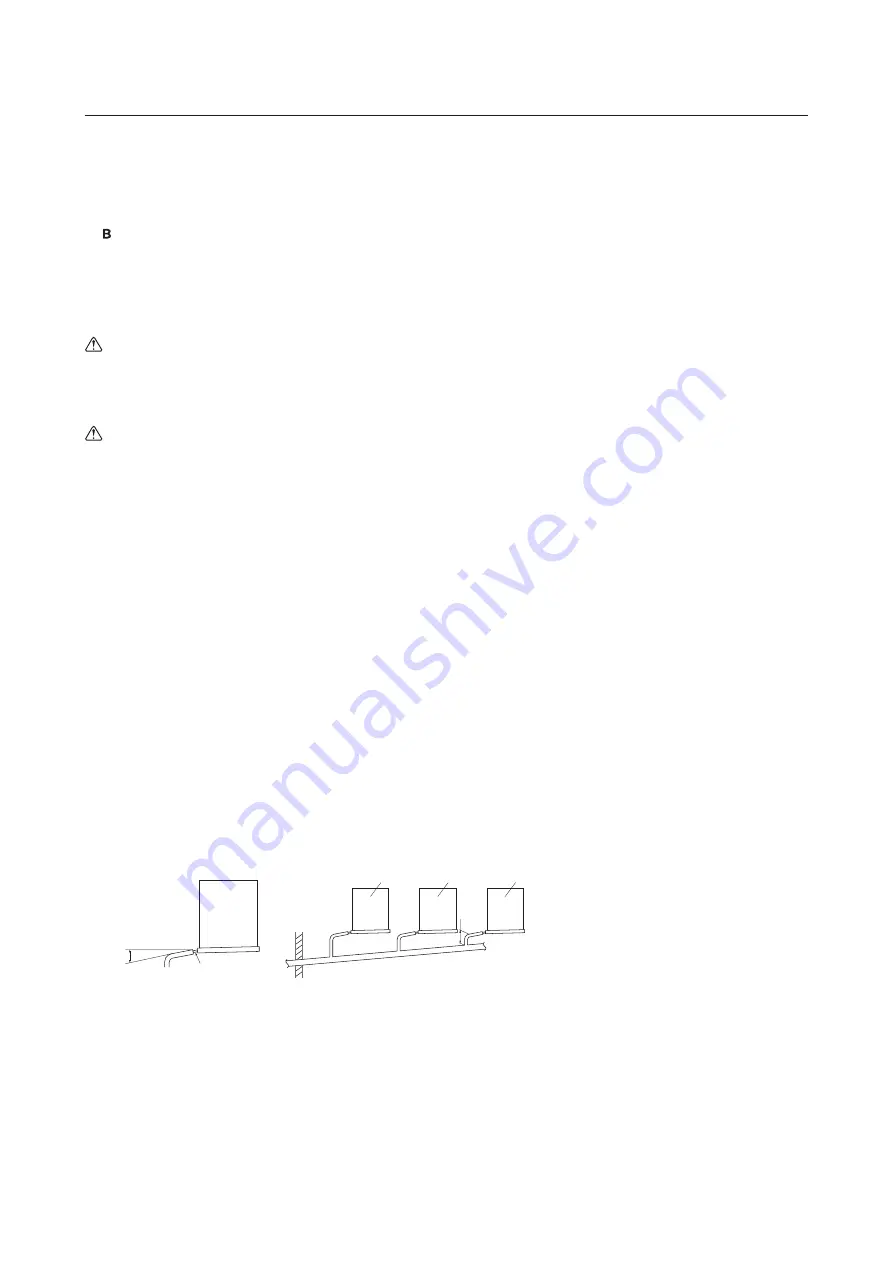
- 58 -
Cautions On Refrigerant Piping
• Be sure to use non-oxidative brazing for brazing to ensure that no foreign matter or moisture enter
into the pipe.
• e sure to apply refrigerating machine oil over the flare connection seating surface and tighten the
connection using a double spanner.
• Provide a metal brace to support the refrigerant pipe so that no load is imparted to the indoor
unit end pipe. This metal brace should be provided 500 mm away from the indoor unit’s flare
connection.
Warning:
When installing and moving the unit, do not charge it with refrigerant other than the refrigerant (R407C or R22)
specified on the unit.
-
Mixing of a different refrigerant, air, etc. may cause the refrigerant cycle to malfunction and result in severe damage.
Caution:
• Use refrigerant piping made of C1220 (CU-DHP) phosphorus deoxidized copper as specified in the JIS H3300
“Copper and copper alloy seamless pipes and tubes”. In addition, be sure that the inner and outer surfaces of
the pipes are clean and free of hazardous sulphur, oxides, dust/dirt, shaving particles, oils, moisture, or any
other contaminant.
• Never use existing refrigerant piping.
-
The large amount of chlorine in conventional refrigerant and refrigerator oil in the existing piping will cause the new
refrigerant to deteriorate.
• Store the piping to be used during installation indoors and keep both ends of the piping sealed until just
before brazing.
-
If dust, dirt, or water gets into the refrigerant cycle, the oil will deteriorate and the compressor may fail.
(4)-4 Drain piping work
1. Ensure that the drain piping is downward (pitch of more than 1/100) to the outdoor (discharge) side. Do not provide
any trap or irregularity on the way. (a)
2. Ensure that any cross-wise drain piping is less than 20 m (excluding the difference of elevation). If the drain piping
is long, provide metal braces to prevent it from waving. Never provide any air vent pipe. Otherwise drain may be
ejected.
3. Use a hard vinyl chloride pipe VP-25 (with an external diameter of 32 mm) for drain piping.
4. Ensure that collected pipes are 100 mm lower than the unit body’s drain port as shown in (b).
5. Do not provide any odor trap at the drain discharge port.
6. Put the end of the drain piping in a position where no odor is generated.
7. Do not put the end of the drain piping in any drain where ionic gases are generated.
[Fig. IV. 2. (4).3]
(A) Downward slope 1/100 or more
(B) Drain hose
(C) Unit
(D) Collective piping
(E) Maximize this length to approx. 100 mm
(A)
(B)
(a)
(C)
(C)
(C)
(D)
(b)
(E)
















































